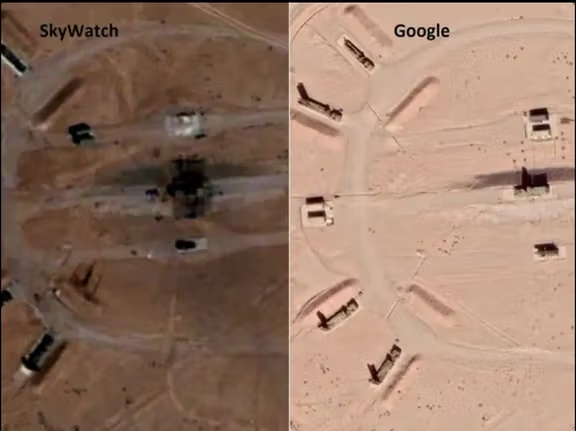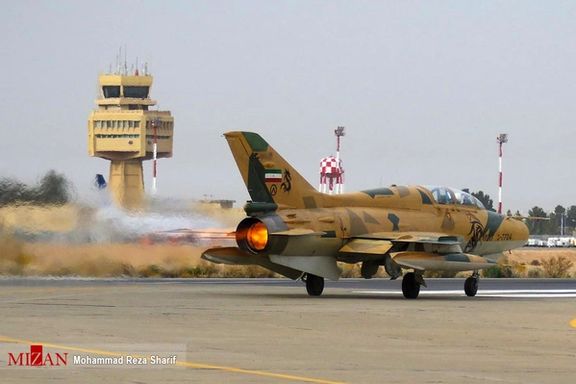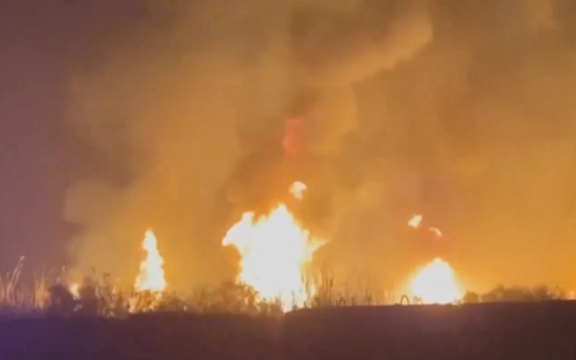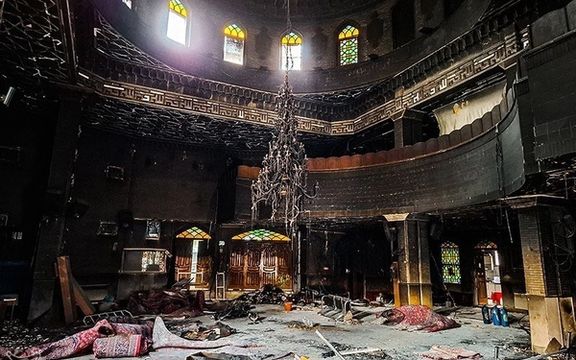On Saturday, The New York Times reported that a flap-lid radar was “damaged or destroyed” following the attack on Esfahan's 8th Shekari Air Base. The radar was a major part of the air defense system in the base which is located near the town of Natanz, home to Iran’s most famous nuclear facilities.
Prior to the incident, four trucks with missiles were positioned around the radar but the satellite images show they were not damaged in the strike. “The fact that they appear undamaged indicated that the attack had a very precise target,” New York Times wrote based on the analysis of satellite imagery.
The offensive “was calculated to deliver a message to Iran that Israel could bypass Iran’s defense systems undetected and paralyze them, using a fraction of the fire power Iran deployed last week when it launched hundreds of drones and missiles at Israel,” added the newspaper citing two Western officials.
Early Friday, explosions were heard near Esfahan as Israel reportedly launched a widely anticipated retaliatory strike. Since then, Iranian officials have unanimously tried to downplay the incident, with Foreign Minister Hossein Amir-Abdollahian even refusing to acknowledge Israel’s part in the attack.
“It has not been proven to us that there was a connection between this and Israel,” he said in an interview with NBC News, further adding that the projectiles used in the incident were “more like toys that our children play with.”
Talking to New York Times, two unnamed Iranian officials confirmed that the projectiles struck an S-300 anti aircraft system in the airbase which is tasked with detecting and warding off aerial threats near the sensitive city of Natanz. Two years ago, Hamid Vahedi, the commander of Iran’s army air force, hailed the “strategic” role of the Shekari fighter base, saying it is “the heart of [Iran’s] air force.”
Meanwhile, military journalist Amir Bohbot said the offensive on the Shekari fighter base in Esfahan, a key site for Iran's nuclear and military operations, inflicted more damage than Iran's bombardment last week, while using one tenth of the weaponry.
“Now Iran realizes that if Israel did carry out the attack, it could next time target nuclear facilities relatively easily,” Bohbot said.
Last weekend, Iran launched its first ever direct offensive against Israeli territory with more than 350 drones and cruise and ballistic missiles. The Israeli army announced that 99 percent of the projectiles were intercepted and downed by Israel and a US-led coalition.
The editor of Kayhan and a close confidant of Supreme Leader Ali Khamenei, Hossein Shariatmadari, claimed only four quadcopters were involved in the Esfahan strike. “Three of them were destroyed by the Iranian defense and the fourth exploded in the sky.”
Shariatmadari claimed “Israel’s response was not on par with Iran’s attack, but Israel has other priorities, including Gaza and Lebanon’s Hezbollah, that could cripple Israel,” referring to Israel's current wars with Iran's proxies on its southern and northern borders.
In a post on X, Iran International producer Farzad Fattahi construed Israel’s attack on Esfahan’s airbase as a warning that cannot be slighted by the Iranian officials’ mockery and condescending attitude towards the incident.
“The collapse of the radar of a nuclear facility is like the activation of a ticking bomb,” he pointed out, further adding that Iranian officials had previously employed the same snobbish attitude and mocking tone when Israeli Prime Minister Benjamin Netanyahu in 2018 disclosed the location of a secret nuclear facility in Turquzabad near Tehran.
Moreover, Ynet news website discussed Israel’s targeting Iran’s Russian-made S-300 defense system, saying it could also be interpreted as a warning to Moscow against cooperating with Tehran’s nuclear program.
NourNews, a media outlet close to Iran's Supreme Council of National Security, dismissed reports of damages to the defense system in Shekari airbase.















